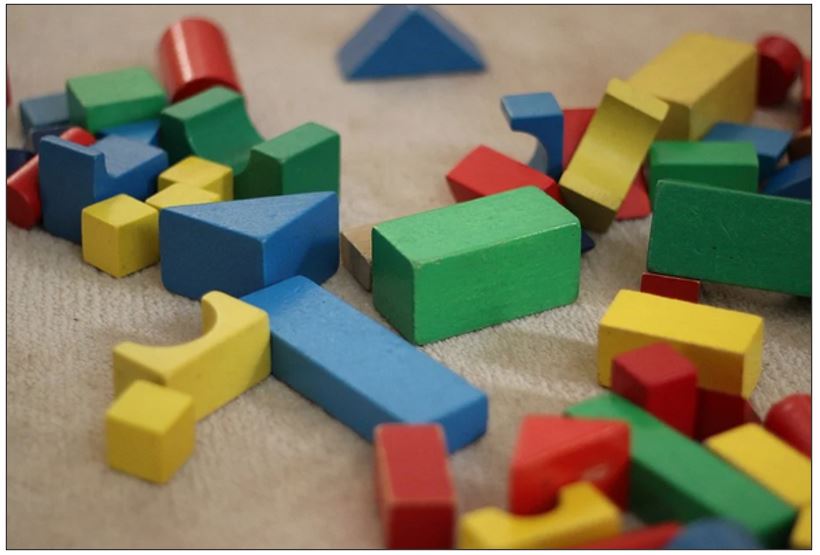Coding activities without a computer?
By: Lisa Anne Floyd and Barb Seaton
Unplugged activities are often used as an approach to learn computer science concepts, including coding, without the use of computers. There is research that supports the use of unplugged activities as a means to effectively introduce students to computational thinking and coding, especially when done in a familiar context (Repenning et al., 2015).
In his book, Computing without a Computer (2014), Dr. Paul Curzon quotes Hideki Yukawa, the first Japanese Nobel Prize winner in Physics:
Suppose there is something which a person cannot understand. He happens to notice the similarity of this something to some other thing which he understands quite well. By comparing them he may come to understand the thing which he could not understand up to that moment.
In addition to connecting new concepts to familiar contexts, unplugged activities are also beneficial when technology is not available or to limit the amount of time our students spend looking at screens. In Teaching Computational Thinking and Coding in Primary Schools (2017), Morris, Uppal and Wells suggest beginning with unplugged activities in K-1 classrooms as students often require a better understanding of their own spatial awareness and directional language before moving onto coding a physical device. Furthermore, unplugged experiences can be viewed as an effective means to introduce foundational concepts of computational thinking and coding before moving onto other pedagogical experiences, although, a teacher may opt to use unplugged at any stage in a learning continuum (Kotsopoulos et al., 2017).

Not all experts agree that unplugged activities are the most effective way to ensure students are exposed to crucial computational thinking and coding experiences. It is sometimes argued that taking the time to learn computer science concepts through writing code on a computer can help educators gain a deeper understanding of computational thinking and coding. This may allow for educators to develop their own ideas for integrating coding into their everyday teaching practices and into other subject areas, including mathematics.
While these criticisms provide considerations for the development of computational thinking and coding activities as well as grounds for further research, classroom teachers should investigate for themselves the potential advantages and ease of incorporating unplugged activities into their practice for the benefit of their own students’ learning.
Unplugged ideas for incorporating computational thinking and coding into everyday practice
Some practical unplugged activities that might help to foster computational thinking and coding have been shared below. In many instances, computational thinking and coding can support logical ways to approach everyday problems and activities (Shute, Sun & Asbell-Clarke, 2017).
As each suggested activity is considered, it is important to remember the important role that teachers play in helping students learn through listening, questioning, provoking and recognizing contexts (Ontario Ministry of Education, 2017). Effective pedagogy should be at the centre of all new ideas that we incorporate into our practice. To be a teacher is to be a lifelong learner and although we can do our best to apply our understanding of new best practices, we should always keep in mind our knowledge of our own students’ learning needs and experiences.

As Grover and Pea (2018) mention in Computational Thinking: A Competency Whose Time Has Come, math and science are the “most intuitive contexts for CT learning”. There is promise; however, to develop computational thinking in all subject areas, especially when it comes to problem solving.
*As with all good teaching practice, any time the teacher is able to use a cross-curricular approach to ensure that students see connections between subject areas and to real-life, they should do so!
Let us know if you have additional ideas that we can include in this list!
Mathematics:
|
|
The Arts: Music analysis naturally encompasses a degree of concepts and skills that connect nicely to coding. In includes many opportunities for remixing, pattern analysis and makes use of algorithms. Teachers can set the stage in activities so students will
|
|
Language: In the primary grades, storytelling and retelling in sequence is an integral part of classroom learning. Teachers may try the following activities that emphasize coding concepts and skills:
|

References
Barat, A., Malchiodi, D., & Barat, A. (2017). ScienceDirect Fostering Computational Computational Thinking in in Primary Primary School through a LEGO-based Music Notation. https://doi.org/10.1016/j.procs.2017.08.018
Curzon, P. (2014). Computing Without Computers, 0–197. Retrieved from: https://smartfuse.s3.amazonaws.com/d3a3ddb3f55b92cb348b18b85f43909a/uploads/2014/06/computing-without-a-computer.pdf
Grover, S., & Pea, R. (2018). Computational Thinking: A competency whose time has come. In S. Sentance, E. Barendsen, & S. Carsten (Eds.), Computer Science Education: Perspectives on Teaching and Learning in School. pp. 19–38. Bloomsbury.
Kotsopoulos, D., Floyd, L., Khan, S., Namukasa, I., Somanath, S., Weber, J., Yiu, C. (2017). A Pedagogical Framework for Computational Thinking. Digital Experience in Mathematics Education.
Morris, D., Uppal, G., & Wells, D. (2017). Teaching Computational Thinking and Coding in Primary Schools. SAGE Publications.
Ontario Ministry of Education. (2014). Paying Attention to Spatial Reasoning, K-12 Support Document for Paying Attention to Mathematics Education, 1–28. Retrieved from papers3://publication/uuid/2E549EDC-042C-4F74-AA45-A859A3EDE041
Repenning, A., Webb, D. C., Koh, K., Nickerson, H., Miller, S. B., Brand, C., Her Many Horses, I., Basawapatna, F., Grover, R. (2015), Gutierrez, K., & Repenning, N. Scalable Game Design : A strategy to bring systemic Computer Science Education to schools through game design and simulation creation. ACM Transactions on Computing Education, 15(2), 1–31. https://doi.org/10.1145/2700517
Shute, V. J., Sun, C., & Asbell-Clarke, J. (2017). Demystifying computational thinking. Educational Research Review, 22, 142–158. https://doi.org/10.1016/j.edurev.2017.09.003